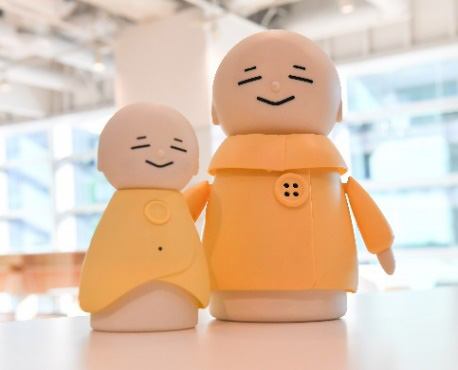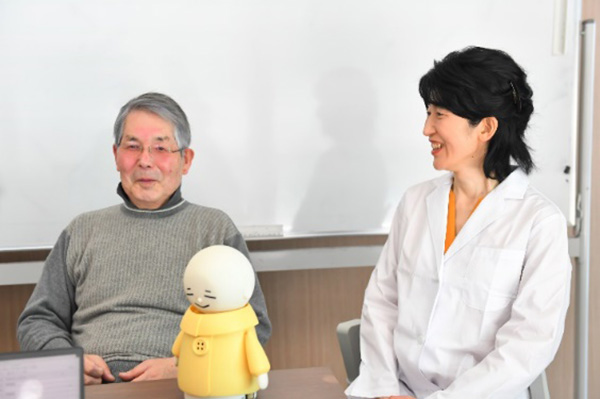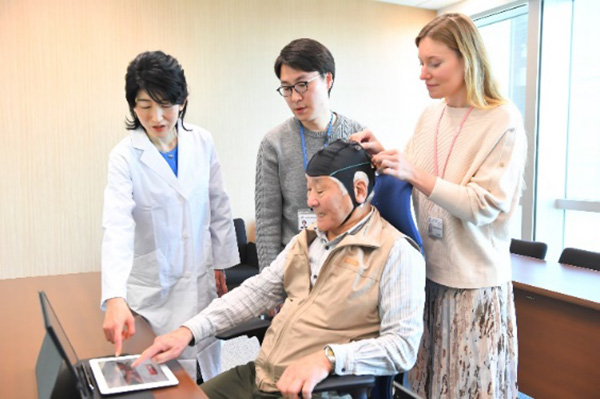Outline of R&D
AIRobots which Help to Envision Promising Future Together with Users and Encourage Action toward It
1. Position in the program
There are things in life that we do not feel an urgent need to do at the time, but in later life we look back and realize that it would have been a good thing to have done, or that it would have been a big problem if we had not done it. If such important things can be noticed and acted upon when necessary, it is hoped that each individual's life will be better and a society will be realized in which people can afford to help each other. The AI robot that we aim for in this project will help users to notice and take action to promote their growth. This will contribute to the "realization of robots that coexist with people," which is the target of Goal 3. The aged society that Japan is experiencing ahead of the rest of the world is expected to advance all over the world, including low and middle income countries. In a super-aged society, everyone faces the degradation of physical and cognitive functions that accompanies aging. Despite the existence of countermeasures against this, only a small number of people actually take the necessary actions, and the problem is expected to become more serious toward 2050, when many people will no longer be able to live their lives in old age and society as a whole will not be able to support them. In this context, we will realize a society in which people can grow and help each other throughout their lives by socially implementing AI robots that assist them in adopting actions in their daily lives that will slow down the decline of their functions and help them to take measures to ensure that their lives are not hindered by the decline of their functions.

2. Overview of the R&D and the Challenges
Making people aware and encouraging them to take action can be difficult for people. Especially in older age, it is extremely difficult to introduce different behaviors into one's life and make them habitual. In the field of frailty and dementia prevention, there are highly skilled supporters who can help people to engage in behaviors that are effective in improving their quality of life. The current technological challenge is that the tacit knowledge of skilled supporters has not been extracted and structured, and even if it were structured, there is no technology to implement it. The original point of this project is to extract, analyze, and structure the tacit knowledge of skilled supporters, specifically, the skills of reading a person's condition, understanding the individuality, and working toward a better condition through continuous interaction, using skilled supporters as role models, and to implement this knowledge in an AI robot by collecting and analyzing various types of biometric information. The goal is to implement these skills in AI robots. Furthermore, we will develop an AI robot that surpasses skilled assistants by having the ability of cooperative abduction to learn by itself, learning the exquisite support skills of skilled supporters, understanding the user's situation, and having the functions and abilities to help the user solve problems and realize their dreams.Technologies for reading human conditions exist, such as emotion recognition based on facial expressions and voice, but it is extremely challenging to develop a technology that can read the conditions as skilled supporters do, as it has not been clarified what kind of conditions they are reading those of users. In addition, there are many programs that encourage appropriate behavior, depending on the purpose, but they require a supporter to motivate users to engage in the program. It is extremely challenging to develop techniques that work to encourage behavior according to the condition and individuality of the person, without human support.

3. Future plans
We will develop technology to recognize the user's state by collecting and analyzing the tacit knowledge of skilled supporters and the user's biometric information, and to generate intervention knowledge to help the user move in a better direction according to the user's internal state and the characteristics of each person. We will implement this algorithm on various robot platforms, and improve it as we demonstrate it, aiming for a world where people and AI robots can grow together, accompanying the user's life.
